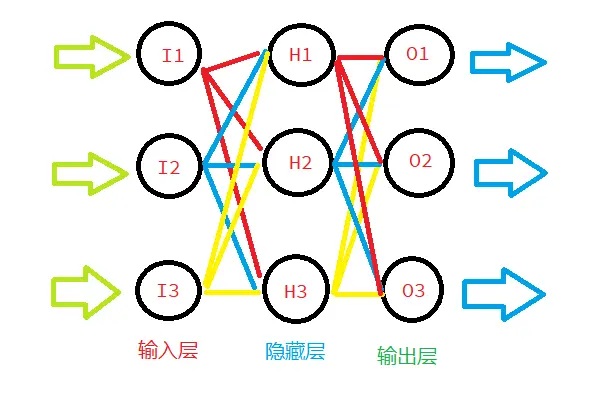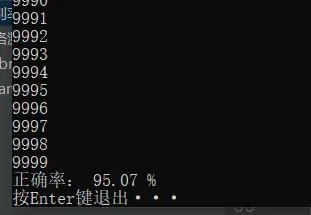
一个简单的神经网络模型
Skyone
科技爱好者
前几天看了本《Python神经网络编程》的书,把一个最简单的神经网络MNIST手写数字识别讲的挺详细的(至少我这个完全的门外汉看懂了)。写个博客展示一下成果。为了SEO,再多写几句。这个神经网络模型基于 numpy 实现,有一个隐藏层,准确率达到95%。

简单介绍
这是一个基于python的最简单的神经网络模型,使用了numpy库,使用的是输入层 - 隐藏层 - 输出层的结构,每一层的节点数自可定义。
激活函数是经典的:
误差函数的斜率:
使用矩阵简化运算:
代码很短、很简单,但效果却还不错。
输入层、隐藏层、输出层节点数分别784、100、10个,经过 MNIST手写数字数据集 的训练后,跑了10000个测试,手写数字识别准确率达到了95%左右。

代码
import numpy
def activate(x):
return 1 / (1 + numpy.exp(-x))
class NeuralNetwork:
def __init__(self, inputnodes, hiddennodes, outputnodes, learningrate=0.3):
# set number of nodes in each input, hidden, output layer
# 分别是:输入层、隐藏层、输出层的节点数
self.inodes = inputnodes
self.hnodes = hiddennodes
self.onodes = outputnodes
# learning rate
# 学习速率
self.lr = learningrate
# weights
# 使用正态分布初始化权重
self.wih = numpy.random.normal(0.0, pow(self.inodes, -0.5), (self.hnodes, self.inodes))
self.who = numpy.random.normal(0.0, pow(self.hnodes, -0.5), (self.onodes, self.hnodes))
def query(self, inputs_list):
# 计算每个数字的概率
# 翻转矩阵
inputs = numpy.array(inputs_list, ndmin=2).T
# 输入进隐藏层的数据与权重相乘
hidden_inputs = numpy.dot(self.wih, inputs)
# 激活函数
hidden_outputs = activate(hidden_inputs)
# 输入进输出层的数据与权重相乘
final_inputs = numpy.dot(self.who, hidden_outputs)
# 激活函数
final_outputs = activate(final_inputs)
return final_outputs
def train(self, inputs_list, targets_list):
# 误差计算函数
inputs = numpy.array(inputs_list, ndmin=2).T
targets = numpy.array(targets_list, ndmin=2).T
hidden_inputs = numpy.dot(self.wih, inputs)
hidden_outputs = activate(hidden_inputs)
final_inputs = numpy.dot(self.who, hidden_outputs)
final_outputs = activate(final_inputs)
# errors
# 误差值
output_errors = targets - final_outputs
hidden_errors = numpy.dot(self.who.T, output_errors)
# update the weights for the links between the hidden and output layer
# 根据误差调整权重
self.who += self.lr * numpy.dot((output_errors * final_outputs * (1.0 - final_outputs)), numpy.transpose(hidden_outputs))
# update the weights for the links between the hidden and output layer
# 根据误差调整权重
self.wih += self.lr * numpy.dot((hidden_errors * hidden_outputs * (1.0 - hidden_outputs)), numpy.transpose(inputs))